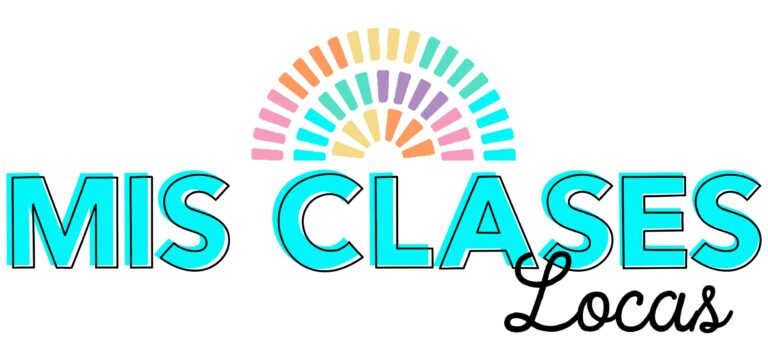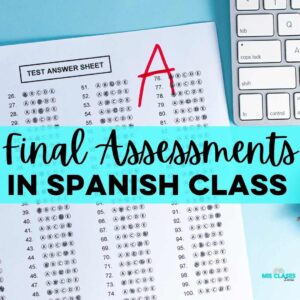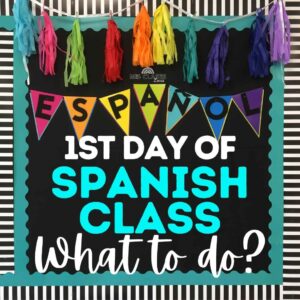Inside: Standard Based Grading in Spanish class. Transitioning to SBG in Spanish class
Shifting to Standard Based Grading in Spanish Class
I have had a few questions lately about how I grade, so I figured it was time for a post. With a change in methods, how I asses has naturally changed. A couple of years ago I switched to grading my modes of communication (Interpersonal Speaking, Presentational Writing and Interpretive Reading, and Interpretive Listening).
At the time I also had a 10% category for Culture, which included Real World Choice Work. Switching to these categories, really helped me focus on WHAT I was assessing.
If an assignment did not fit a category, should I really have been assigning it? This helped me finally fully move away from quizzes that focused on grammar or vocabulary because they did not fit any certain communicative focus! It also helped me cut the cord to giving a grade for a craftivity such as the piñata.
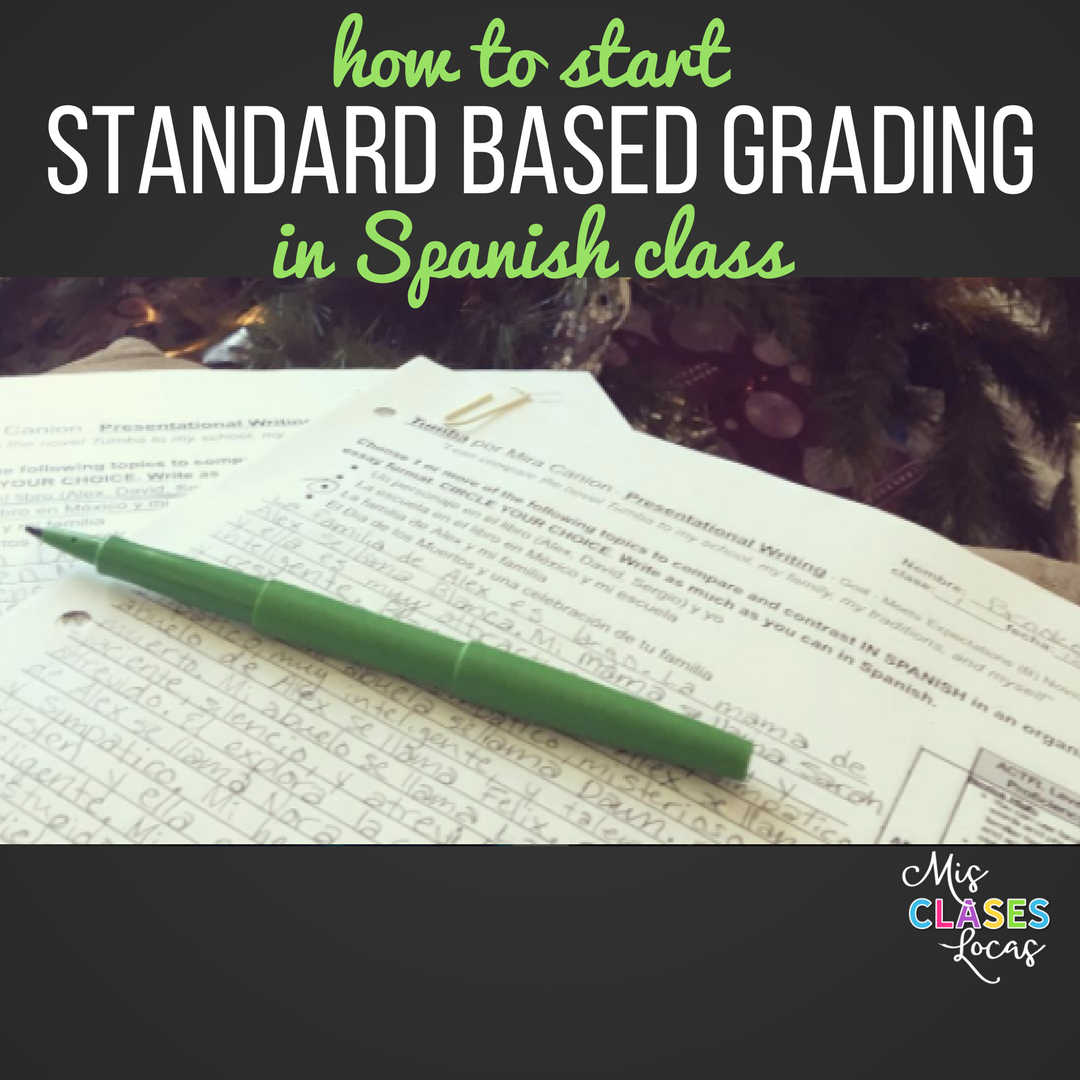
How to Start Standard-Based Grading in Spanish Class
When I came back from maternity leave my school was working on making a shift to standards-based grading (SBG). I decided that second semester I would give it a go. Since our grade book was still set up traditionally, I know our modified approach may not please those doing pure SBG, but I figured I would show you what I am doing during our transition.
You can see more about how I communicated SBG with students and parents here.
Here are the main ideas that I am currently using to show student’s mastery.
Essential Standards are used as equally weighted categories
To try and keep it simple I started with just the following 4 categories. I am debating adding back in a culture category, but the issue is I am not sure how I would assess it.
- Interpersonal Speaking
- Interpretive Reading
- Interpretive Listening
- Presentational Writing (I used to do presentational that also included speaking, but when in life will a student need to make a presentation to a room of people in Spanish?!?!)
4 point grade scale
Everything is given a 4, 3, 2, or 1 as the grade. To pacify the traditional grade book they are as follows 4-A, 3-B, 2-C, 1-D.
- 4 – exceeds expectations
- 3 – meets expectations
- 2 – approaching expectations
- 1 – below expectations
- For most assessments, these are actually translated to performance-based rubric using proficiency levels.
- For example on a writing assessment at the end of Spanish 2, the meets expectations (3) was a novice high. This means the grading was as follows 4 – Intermediate Low, 3 – Novice High, 2 – Novice Mid, 1 – Novice Low. I had been using this style of grading for a while, but did need to remove the +/- from the grades. This post from Creative Language Class does a grade job explaining assigning a grade to a proficiency-based rubric. Actually, the rubric they use is my favorite as well.
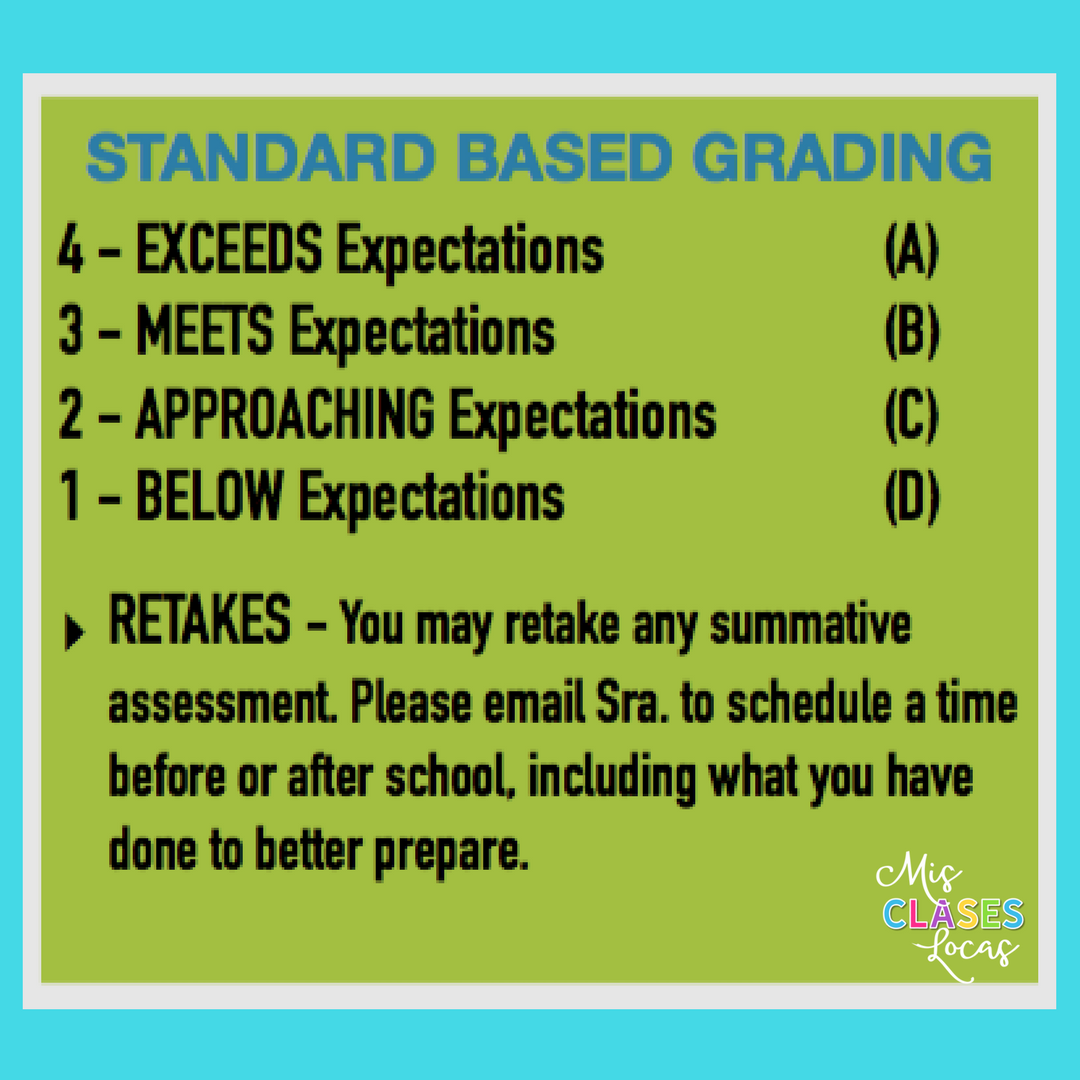 |
| this is taken from my class syllabus |
Retakes are allowed on everything
Since the point is to show mastery of the standard, or in my case performance of the goal proficiency level, students may retake any summative assessment that they do not earn a 4 on. My policy is that students must email me with the following: what assessment they want to do when they plan to take it (before or after school or during a study hall) and what they have done to improve since their last attempt.
Very few students actually take advantage of the ability to retake, but I think a lot of that goes with the climate of my school, where many students are just looking to meet expectations and are working towards community college.
Only summative assessment grades
This means that formative practice does not go towards the final grade. It can be entered in a 0 weighted category for students and parents to see what has been completed, but just doing the worksheet does not get you “points.” This means that instead of students “playing school” and just turning in junk, they actually show what they know in assessments. This also means there is no “participation” grade. Here are ideas in my post how to assess a novel.
Reflections on SBG in Spanish Class
How to keep track of everything for SBG
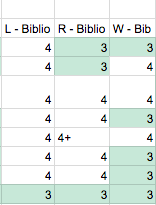 |
| Standard based grade book spread sheet |
Standards Based Grading in Spanish Class Update
Since this post was published in 2018, my entire school went full SBG. This means in our grade book we actually entered 1, 2, 3, 4.
Having the whole school with the standards based mentality helped a lot.
The school also added that school-wide 10% of the grade was based on 21st century skills/employability skills. This 10% is where we could assess students on accountability, cooperation, initiative, etc. Having this section of the grade book helped to get students to actually do some of the work. This was especially needed during the 20-21 school year when we were hybrid.
Do you use Standards Based Grading? What tips do you have for me? What challenges are you facing?
